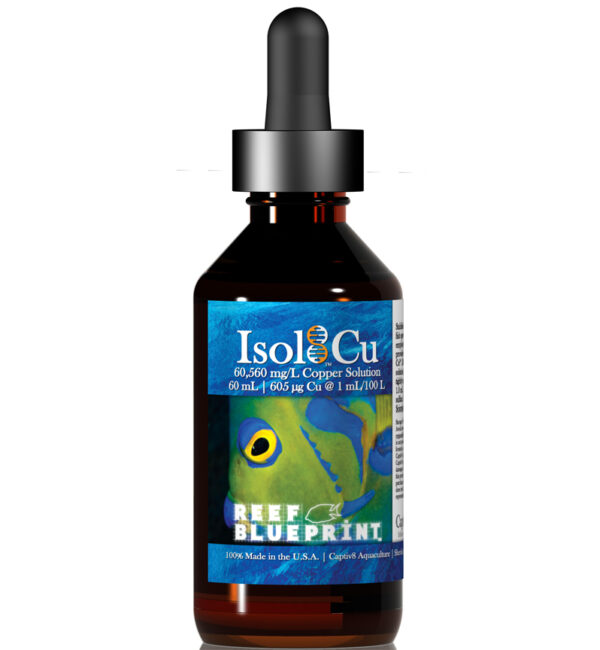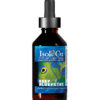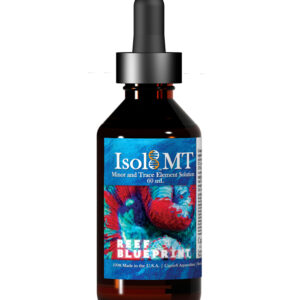Copper (stabilized) sol’n; 60,560 ppm. 1 drop per 4 gallons establishes 0.20 ppm copper.
Application
Keep out of reach of children and unauthorized persons. Avoid contact with skin, eyes, and mucous membranes. Store in a cool, dry location away from sunlight.
The following discussion and recommendations are made expressly for recirculating systems. Laboratory application may proceed as required by study objectives. Review Disclaimer at bottom of page prior to using this or other Captiv8 Aquaculture product(s).
The rate of ion depletion due to cohort uptake is driven by various chemical and physical factors which are unique to each independently-operating recirculating system, and which are constantly changing as cohort biomass increases and decreases.
Monitoring (daily) the system’s concentrations of element(s) provided by this formulation and referencing apparent changes in cohort biomass will enable User to adjust dosing of this formula to suit system requirements, improving overall effectiveness and resulting in less wasted solution.
Recommended is diluting an appropriate volume of this solution into a larger volume of purified water (with a purity of at least 98%), and applying this diluted solution to the system with an automated dosing system. Dosing frequency is directly proportional to stability of ionic concentrations and, resultantly, continuous cohort biomass growth. A 1 – 10 s drip interval provides adequate ionic stability, and is recommended.
If no automated dosing system is available, then apply solution manually each day. Dosing frequency is directly proportional to stability of ionic concentrations and, resultantly, continuous cohort biomass growth. Dosage volume per 24 h is divided by the dosing frequency*.
It is not recommended that this formulation be dosed fewer than four times weekly.
Reference Standards: to achieve a [Cu] of 0.20 mg/L, dilute 1 drop (0.05 mL) per 4.0 gals.
Recommended: Do not increase parameter concentration by more than 5% per 24 h period in systems with existing cohorts. Aside from emergencies (e.g. excessive nutrient content in an active system, greatly depressed or excessive salinity, etc.), gradual changes in water composition are generally tolerated better by aquatic organisms than are rapid changes.
*Example: If dosage volume per 24 h = 1 mL and dosing frequency = 4, then dose 0.25 mL per event.






